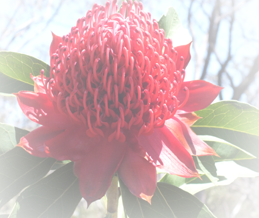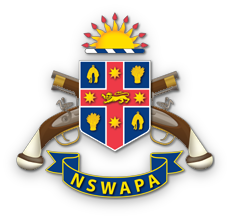History
The NSW Amateur Pistol Association, now numbering over 9500 members in 150 clubs, was formed in 1958 with three Clubs. It was called the NSW Shooting Association. The foundation President was Ben MacArthur of the Sydney Pistol Club. This small Association was able to send a team to the First Australian Championships, which were held in Hobart in 1958. They entered the only three competitions conducted in those days - Free Pistol, Rapid Fire and Centre Fire. Looking at old correspondence, we find that sponsorship was just as hard to obtain then as it is now.
The Sport was slow to develop until 1961 because of heavy licensing restrictions placed on the amateur shooter, but by the end of 1963 there were 12 clubs (with 254 members) and a rapid growth was expected as the Pistol Licence Act of 1927-36 had just been amended. Under the earlier Act it had been virtually impossible to obtain a pistol licence for target shooting. In 1957-58, licences were issued for Olympic Training, but, after 11 licences were issued, it was back to the old problem of "target shooting is not a good and sufficient reason for acquiring a licence."
In 1966, Sunday shooting was approved for target shooters. The main concern of Clubs was to bring their ranges up to the exacting standards of safety required by the Police to gain Range Approval.
1967 saw 65 Clubs and 1750 members in NSW. For the first time NSW was the Host State for the National Championships. Also, for the first time, a full-time paid Administrative Secretary was appointed.
In August 1968, the legal machinery was set in motion for the introduction of licences for Standard Pistol and Air Pistol. With the awareness of the need for increased competition within the State, to develop shooters into top-line members, Zone Competitions were arranged monthly with Regional Championships approximately every 3 months. To provide the opportunity for all members to participate in the running of the State, General Meetings were held at Regional Championships instead of only in Sydney.
In 1971, there were 85 Clubs and 2600 members. During the year, the Pistol Licence Act was amended to enable each shooter to have 5 pistols. The Regulations were also altered to allow Clubs to admit junior members with no minimum age limit applying. However, a "recommended policy for juniors" was laid down by the Association. At the State Championships in October 1972, a Junior section was established for the first time.
In 1977, the Service Pistol and Black Powder Matches were adopted.
1978 brought an extra licence for .45s but with it came the obligation for shooters to have security cabinets or safes.
In 1980, NSW endorsed the Practical Pistol Match and Metallic Silhouette Big Bore Matches.
During '81/82 the Executive was successful in negotiating a change in the Regulations to the Firearms and Dangerous Weapons Act, which firstly recognised the need for special pistols for the Metallic Silhouette Match, secondly lifted the maximum number of licences to 10 under certain circumstances and finally raised calibre restrictions for Black Powder Pistols for those seeking to shoot replicas. The introduction of .22 Metallic Silhouettes and the greater popularity of Service Pistol broadened pistol shooting so that it was more fun for more people. In 1987, NSW held the Inaugural Metallic Silhouette National Championships. 1988 saw Police approval of the Service Pistol Production Match and the NRA Action Matches.
Over the years many NSW members have been on Pistol Australia and Australian Shooting Association management teams. Our shooters have successfully represented Australia many times at World and Regional Championships, Commonwealth and Olympic Games. Australia's first Olympic Medallist in Pistol Shooting, Patti Dench, was a long time member of the NSW Amateur Pistol Association.
We are very proud of our achievements over the last 60 years.
The Sport was slow to develop until 1961 because of heavy licensing restrictions placed on the amateur shooter, but by the end of 1963 there were 12 clubs (with 254 members) and a rapid growth was expected as the Pistol Licence Act of 1927-36 had just been amended. Under the earlier Act it had been virtually impossible to obtain a pistol licence for target shooting. In 1957-58, licences were issued for Olympic Training, but, after 11 licences were issued, it was back to the old problem of "target shooting is not a good and sufficient reason for acquiring a licence."
In 1966, Sunday shooting was approved for target shooters. The main concern of Clubs was to bring their ranges up to the exacting standards of safety required by the Police to gain Range Approval.
1967 saw 65 Clubs and 1750 members in NSW. For the first time NSW was the Host State for the National Championships. Also, for the first time, a full-time paid Administrative Secretary was appointed.
In August 1968, the legal machinery was set in motion for the introduction of licences for Standard Pistol and Air Pistol. With the awareness of the need for increased competition within the State, to develop shooters into top-line members, Zone Competitions were arranged monthly with Regional Championships approximately every 3 months. To provide the opportunity for all members to participate in the running of the State, General Meetings were held at Regional Championships instead of only in Sydney.
In 1971, there were 85 Clubs and 2600 members. During the year, the Pistol Licence Act was amended to enable each shooter to have 5 pistols. The Regulations were also altered to allow Clubs to admit junior members with no minimum age limit applying. However, a "recommended policy for juniors" was laid down by the Association. At the State Championships in October 1972, a Junior section was established for the first time.
In 1977, the Service Pistol and Black Powder Matches were adopted.
1978 brought an extra licence for .45s but with it came the obligation for shooters to have security cabinets or safes.
In 1980, NSW endorsed the Practical Pistol Match and Metallic Silhouette Big Bore Matches.
During '81/82 the Executive was successful in negotiating a change in the Regulations to the Firearms and Dangerous Weapons Act, which firstly recognised the need for special pistols for the Metallic Silhouette Match, secondly lifted the maximum number of licences to 10 under certain circumstances and finally raised calibre restrictions for Black Powder Pistols for those seeking to shoot replicas. The introduction of .22 Metallic Silhouettes and the greater popularity of Service Pistol broadened pistol shooting so that it was more fun for more people. In 1987, NSW held the Inaugural Metallic Silhouette National Championships. 1988 saw Police approval of the Service Pistol Production Match and the NRA Action Matches.
Over the years many NSW members have been on Pistol Australia and Australian Shooting Association management teams. Our shooters have successfully represented Australia many times at World and Regional Championships, Commonwealth and Olympic Games. Australia's first Olympic Medallist in Pistol Shooting, Patti Dench, was a long time member of the NSW Amateur Pistol Association.
We are very proud of our achievements over the last 60 years.
The NSWAPA is administered under the terms of its Constitution, which provides for a Management team of seven (7) officers including: the President, Treasurer and the Secretary.
The Executive Committee act for the benefit of the association and its members at times of policy making. The Executive Director and staff are responsible for communicating such decisions to affiliated clubs in order to ensure that members are informed of current issues at all times.
The Executive Committee act for the benefit of the association and its members at times of policy making. The Executive Director and staff are responsible for communicating such decisions to affiliated clubs in order to ensure that members are informed of current issues at all times.
Structure
The NSWAPA operates within a two-tiered system with each tier maintaining a specific and important role within that structure. Starting at the grass roots, the first level consists of all the individual clubs around New South Wales who maintain the member base of the organisation. In order to take up the sport of target pistol shooting an individual joins a club and thus becomes part of a close knit community that shares a common enthusiasm and enjoyment of the sport. It is the responsibility of the Clubs to communicate with their members and with the NSWAPA who form the second tier.
Purpose
Mission
We are directly responsible for all activities at a State level. We share a dual responsibility with our affiliated pistol clubs in keeping open clear lines of communication about State as well as National issues. If you have any queries with regard to our activities, your first point of contact is your Club Secretary and thereafter the NSWAPA Operations Manager.
Our objectives are:
•
to promote and coordinate responsible pistol shooting sports, both competitive and recreational, of all disciplines within New South Wales, and
•
to promote and coordinate participation in, and organisation of statewide competitions supporting sustainable international success in line with AISL's goals.
ABOUT THE NSW AMATEUR PISTOL ASSOCIATION




